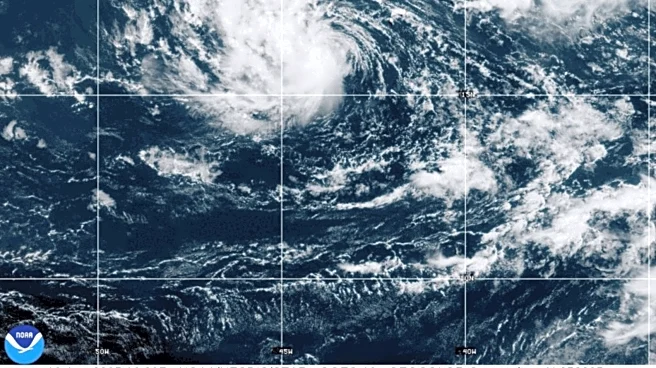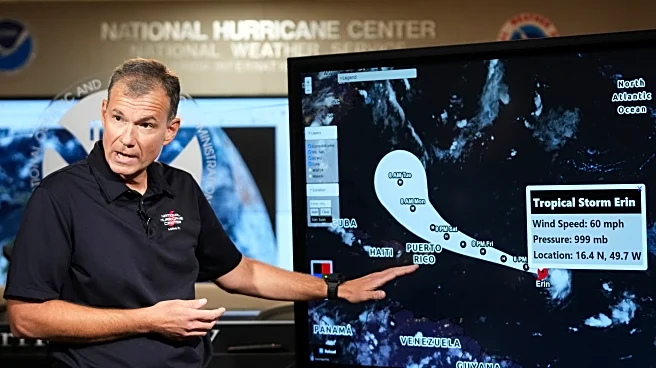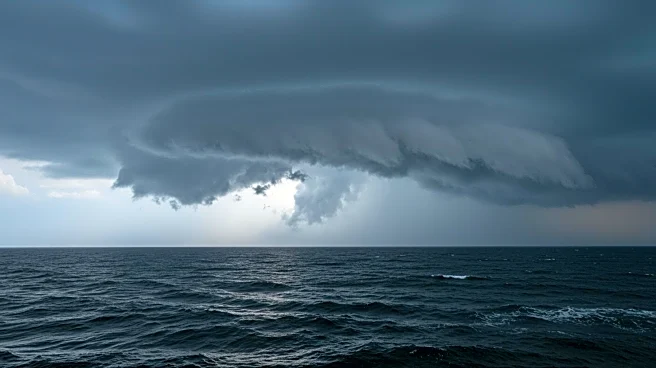What's Happening?
Tropical Storm Erin has intensified with sustained winds of 70 mph, according to the National Hurricane Center. The storm is currently tracking west-northwest across the Atlantic and is expected to strengthen further, potentially becoming a Category 4 hurricane by Sunday. Erin is forecasted to pass north of the Leeward Islands, Virgin Islands, and Puerto Rico, with tropical storm watches issued for several northern Leeward Islands. While direct landfall is unlikely, the storm could bring rough seas, rip currents, gusty winds, and heavy rain, potentially causing flash flooding or mudslides. The Bermuda High, a semi-permanent high-pressure area, may influence Erin's path, steering it north if the storm strengthens quickly.
Why It's Important?
The development of Erin as a potential hurricane is significant as it marks the first hurricane of the Atlantic season, slightly behind the typical schedule. The storm's trajectory and intensity could impact Caribbean islands and possibly the U.S. East Coast, posing risks of rough surf and dangerous rip currents. The warmer-than-normal sea surface temperatures in the western Atlantic provide ample energy for Erin to intensify, highlighting ongoing climate change concerns. The storm's progression is crucial for preparedness measures in affected regions, emphasizing the need for vigilance during the peak hurricane season.
What's Next?
As Erin continues to strengthen, its path will become clearer by the weekend. Islands in its potential path should prepare for possible impacts. The National Hurricane Center is monitoring another area of showers and thunderstorms in the Gulf, which could develop into a tropical depression before moving inland. Heavy rain and flooding risks are anticipated in southern Texas and parts of southern Louisiana, necessitating readiness for adverse weather conditions.












